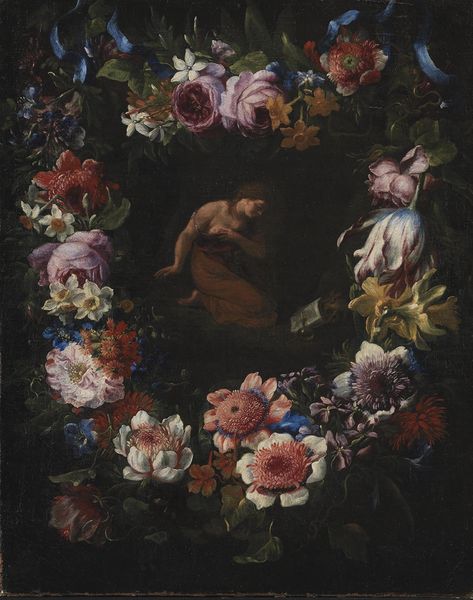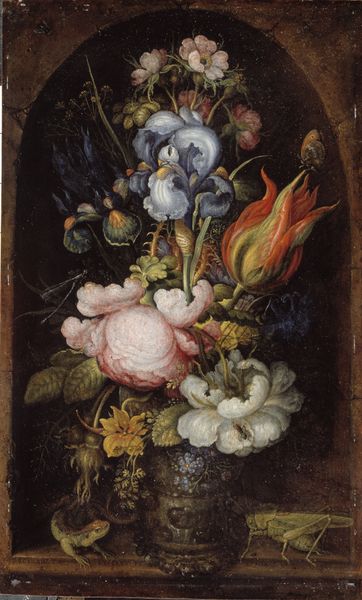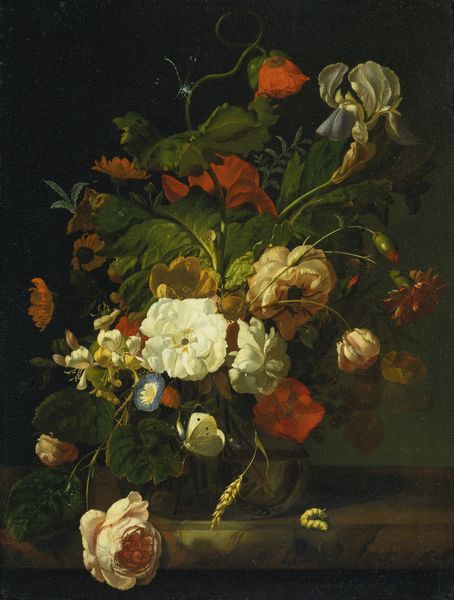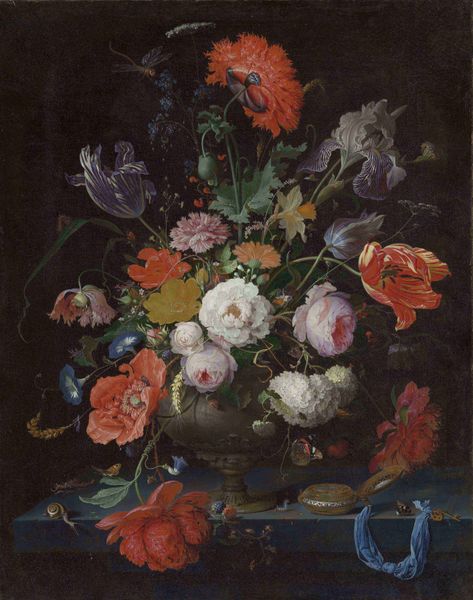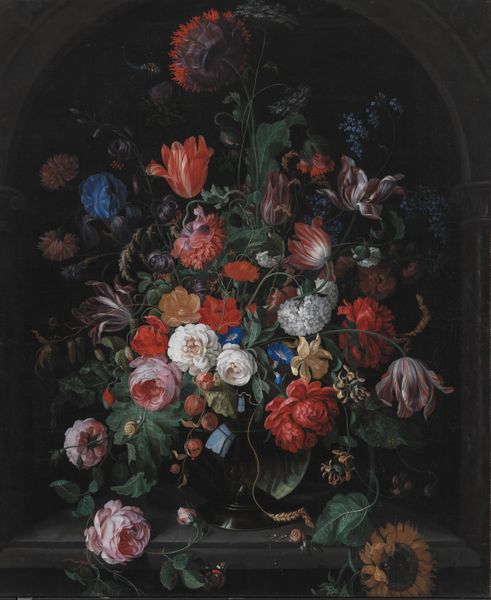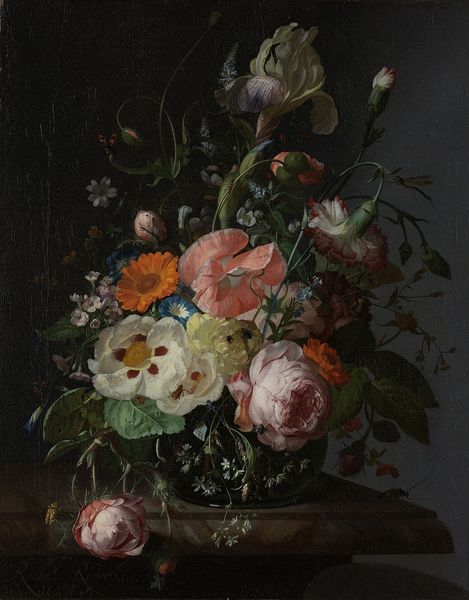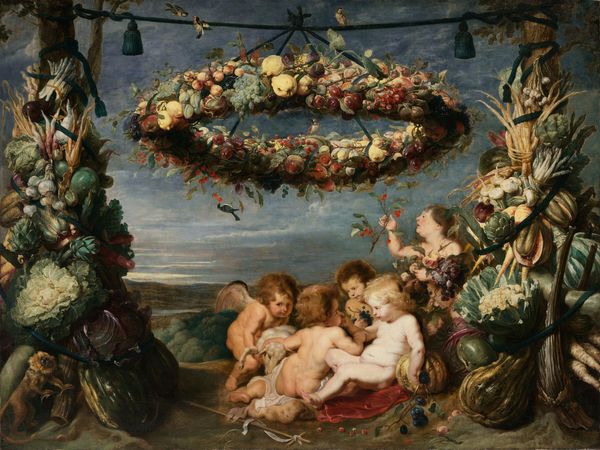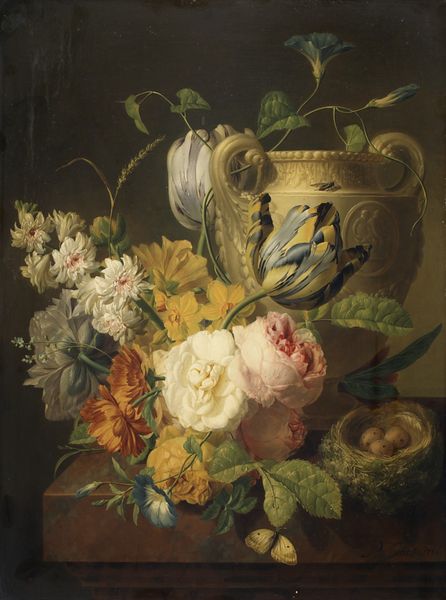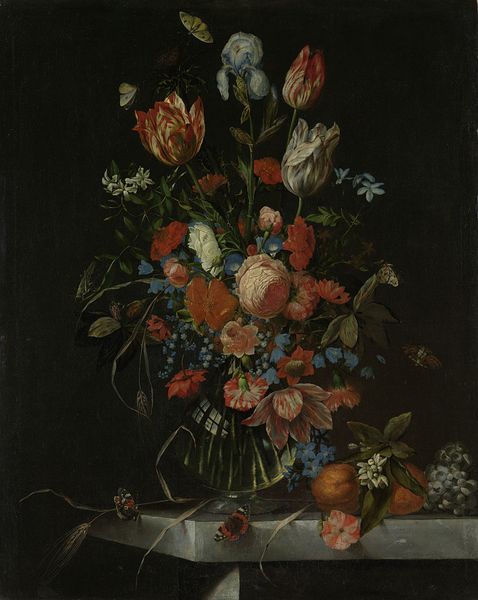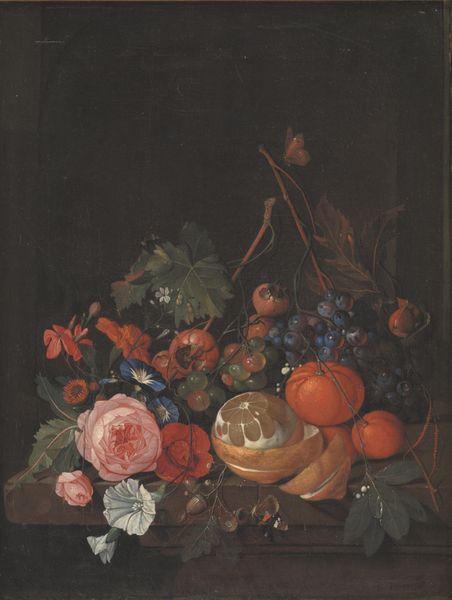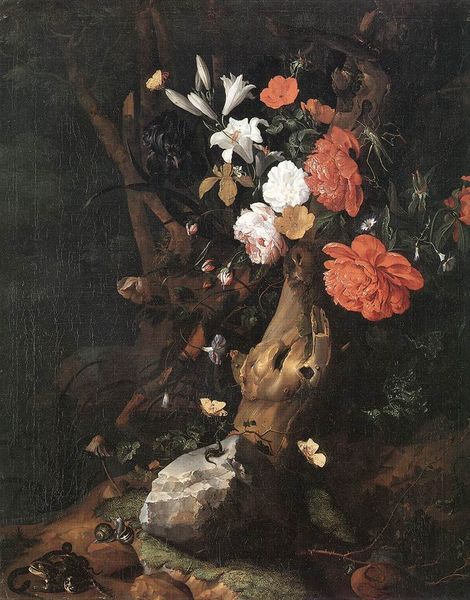
painting, oil-paint
#
garden
#
allegory
#
baroque
#
painting
#
oil-paint
#
figuration
#
oil painting
#
plant
Copyright: Public domain
Curator: Up next, we have “Festoon of Flowers and Fruits and Cherubs” by Jan Brueghel the Elder. It’s an oil painting featuring—well, as the name suggests—a garland or festoon brimming with flora, fauna, and plump cherubic figures. Editor: It strikes me immediately as a potent symbol of Baroque abundance and the transience of beauty, rendered in delectable detail. The sheer volume of meticulously rendered flowers and fruits… It almost feels excessive. Curator: Excess is very much part of its symbolic power! These weren't just pretty arrangements. Festoons often adorned religious or aristocratic settings, visually reinforcing themes of prosperity and divine blessing. Brueghel the Elder masterfully depicts the bounty of creation, all under the watchful gaze of innocence, embodied by the cherubs. Editor: You can almost feel the weight of all that matter, pressing down—both the fruits in their ripeness and the cherubs, also full-bodied. The darker background contrasts vividly, highlighting not just form, but the precious pigments and skill involved in creating such a realistic illusion. What kind of patronage commissioned such displays? Curator: Often, wealthy patrons—nobility or successful merchants—who wished to express their worldliness and piety in equal measure. It was a sign of their refined taste but also a gesture of thanks for God’s favor. The festoon acted as a kind of three-dimensional trophy or emblem of success, perpetually on display. Editor: It’s also interesting to think about the labor. Cultivating these exotic blooms in that period required enormous horticultural skill; producing this kind of detail required refined training and material means—consider the cost of pigments! It elevates “still life” into an active commentary about the human imposition on nature, and its subsequent commodification as wealth and status. Curator: Indeed! It really offers an intriguing lens into the values and anxieties of the time— a testament to faith, beauty, and the power of acquisition. I find it endlessly fascinating how these early still lifes reflect so much cultural information through ostensibly simple arrangements. Editor: Absolutely, looking at this through the materiality also gives it an earthy, almost grounded feeling to a concept normally considered lofty or even 'heavenly'. It adds weight to our reading of it.
Comments
No comments
Be the first to comment and join the conversation on the ultimate creative platform.
